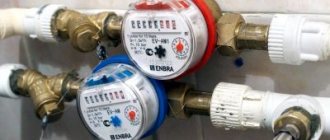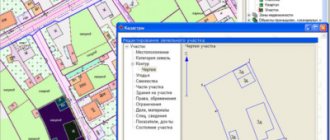What is the operation of construction sites?
After completion of construction and commissioning of the facility, an equally important process of facility management begins. This is the operation of construction projects or, in other words, the safe operation of capital construction projects.
The operation of construction projects according to their functional purpose, first of all, should ensure comfortable and trouble-free living for people. Therefore, the safety of buildings and structures is always given great attention both at the stage of developing project documentation and during their subsequent operation.
Design standards were developed so that, on the one hand, the probable possibility of an emergency situation was excluded and the required margin of safety and durability of construction projects was ensured. But at the same time, the minimum cost of both design and construction itself was achieved without reducing consumer qualities.
Please note! Operation of construction projects is ensured by a range of property management services. Housing maintenance also includes technical inspections, scheduled and routine repairs, sanitary maintenance, etc.
Operation of industrial facilities
Main groups of construction sites for safety
The commissioning of construction projects is a very significant event for any construction company. The signed act of commissioning confirms the professionalism of the builders, the ability to fulfill their obligations and the desire to move forward in the creative process.
The consequence of all this is a high trust rating in the organization. This means new orders for buildings, houses, airports, and so on.
Depending on their purpose, all construction projects are divided into two large groups:
First group
Civil and industrial facilities, the safe operation of which does not fall under the jurisdiction of Rostechnadzor.
Second group
Hazardous production facilities, the safe operation of which is carried out only thanks to control by Rostechnadzor authorities.
Ready-to-use residential complex
Sanitary, hygienic and fire safety requirements for development
When developing an estate, it is necessary to ensure optimal sanitary, hygienic and fire safety requirements in relation to: • orientation and insolation of residential buildings; • protection of residential buildings from noise and dust; • fire and sanitary-hygienic gaps between individual buildings and structures.
Sanitary and hygienic requirements Insolation (the time direct sunlight enters the room) is very important for the health and well-being of people, therefore a residential building must be located on the master plan of the estate so that the duration of continuous solar irradiation of residential premises for the period from March 22 to September 22 in areas south of 60° north latitude (this is the latitude of St. Petersburg, Vologda, Bereznyakov, Magadan) and from April 22 to August 22 in areas north of 60° north latitude there was at least 3 hours a day in one living room for one three-room apartments and at least 30% of living rooms in four-room or more apartments.
This condition corresponds to the orientation of the living quarters of the house to the northeast, southwest, while the windows of the house face in different directions.
Requirements for insolation can be achieved by observing sanitary, hygienic and fire safety gaps between buildings (see below), taking into account the placement of the largest number of rooms in a residential building towards a more favorable orientation towards the cardinal points.
According to experts, 20% of all diseases are caused by increased levels of noise, vibration and electromagnetic radiation.
The road passing under the windows produces at least 1000 dB, with the norm being 40-45 dB during the day and no more than 30 dB at night. Therefore, if the road passes next to the estate, in order to reduce the impact of noise and vibration, it is advisable to move the residential building away from the red line deeper into the estate.
In addition, the protection of the house from noise and dust is provided by strips of green spaces that isolate the house from the street, as well as from the garage and utility areas.
As special technical measures to reduce noise levels, we can recommend special windows: noise-proof windows remove 10 dB, hermetic windows remove another 30 dB.
According to sanitary conditions, the distance to the boundaries of the neighboring plot should be at least: from a residential building - 3 m; from buildings for keeping livestock and poultry - 4 m; from other outbuildings (bathhouse, garage, etc.) - / m; from the trunks of tall trees - 4 m; from the trunks of medium-sized trees - 2 m; from the bush - 1m.
The distance from the windows of living rooms to the walls of a residential building and outbuildings on the neighboring site must be at least 6 m.
The minimum distances between buildings for sanitary conditions within the site should be: • from a residential building and cellar to a latrine and a building for keeping livestock and poultry - 12 m; • from a residential building to a shower, bath (sauna) - 8 m; • from the well to the latrine and composting device - 8 m. The same distances must be maintained between buildings in adjacent areas.
Buildings for keeping livestock and poultry may be attached to manor residential buildings, provided they are isolated from living rooms by at least three utility rooms; in this case, premises for livestock and poultry must have an isolated external entrance located no closer than 7 m from the entrance to the house.
A garage, bathhouse, outbuilding for solid fuel and equipment may be attached to a residential building.
Fire safety requirements Fire distances between residential and auxiliary buildings must be as indicated in table. 2.1.
Table 2.1
| Fire resistance level of the building | Distance at degree of fire resistance , m | ||
| I, II | III | IV, V | |
| I-IIIIV, V | 68 10 | 8 8 10 | 10 10 15 |
The classification of buildings according to the degree of fire resistance is adopted according to fire safety standards for the design of buildings and structures, explanations for the classification of the degree of fire resistance of buildings.
The distance between the walls of buildings without window openings may be reduced by 20%, with the exception of buildings of IV and V fire resistance degrees.
For two-story frame and panel buildings of fire resistance class V, as well as for buildings covered with flammable materials, fire distances must be increased by 20%.
The distances between a residential building and outbuildings (barn, garage, bathhouse), as well as between outbuildings within the same land plot (regardless of the total building area) are not standardized.
Distances from one- and two-apartment residential buildings and outbuildings on a personal plot of land to residential buildings and outbuildings on neighboring land plots are taken according to Table 2.1.
Moreover, if the total built-up area of residential buildings and outbuildings on adjacent plots, including the undeveloped area between them, is less than or equal to the largest permissible built-up area (floor) of one building of the same degree of fire resistance according to Table 2.2, then the distance between these objects is not standardized .
The distance between a residential building and the border of a neighboring plot is measured from the base of the house or from the wall of the house (in the absence of a base), if the elements of the house (bay window, porch, canopy, veranda, roof overhang, etc.) protrude no more than 50 cm from the plane of the wall .
If the elements protrude by more than 50 cm, the distance is measured from the protruding parts or from their projection onto the ground (cantilever roof canopy; elements of the 2nd floor located on posts, etc.).
When erecting outbuildings on a site located at a distance of 1 m from the border of an adjacent site, the roof slope should be oriented towards its site.
Table
| Degree fire resistance building | Quantity floors for low-rise construction | Greatest permissible area buildings , m |
| I, II | Up to 4 | 2200 |
| III | Up to 4 | 1800 |
| IV | 1 | 1400 |
| IV | 2 | 1000 |
| V | 1 | 1000 |
| V | 2 | 800 |
When placing a residential building and buildings on a site, it is necessary to take into account both sanitary and hygienic and fire safety requirements.
For example, if, according to fire safety requirements, the distance between a residential building and outbuildings within a site is not standardized, but sanitary and hygienic requirements determine the minimum distance between them, then the distance should be set taking into account sanitary and hygienic requirements.
Or, if, according to sanitary and hygienic requirements, the distance between residential buildings in adjacent areas, regardless of the degree of fire resistance of the buildings, is 6 m, then this distance should be clarified according to fire safety requirements in accordance with Tables 2.1 and 2.2, taking into account the degree of fire resistance of the buildings.
The territory of the estate can be divided into three zones: • residential; • economic; • recreation area (garden).
Operation of construction projects: main tasks
Operation of construction projects is a set of works for the maintenance, maintenance, repair of a building or structure and consists of services for property management, operation and maintenance of the infrastructure of residential and non-residential real estate.
It should be noted that housing maintenance also includes technical inspections. As well as scheduled preventive maintenance, routine repairs, sanitary maintenance, and so on.
In a word, it can be stated that the operation of a building or structure solves the following main tasks to ensure:
- normal functioning of the building in accordance with its functional purpose;
- planned operational characteristics of the facility throughout its entire service life;
- established level of security;
- trouble-free operation of the building's engineering and technical systems;
- established internal climate (meaning temperature and humidity conditions);
- normal sanitary and hygienic condition of the facility and surrounding area.
Note! The main goal of the technical operation of real estate is to achieve the most efficient use of the housing stock with the most appropriate use of real estate.
Operational requirements for a building or structure
Since complex technical support of a construction project is mandatory in buildings and structures throughout their entire life cycle, a specialist is appointed to control the quality of the operational services provided, who oversees the entire scope of work and is responsible for the operation of all systems.
- Heat supply.
- Cold and hot water supply.
- Sewers.
- Electrical equipment.
- Automation.
- Pumping stations.
- Air conditioning.
- General exchange and supply and exhaust ventilation.
- Water disposal.
- Low current systems.
- Technological equipment.
- Maintenance of elevator facilities and so on.
Repair of elevator facilities
Each of the above systems makes its contribution to both the safety and durability of the facility, which, in turn, has a positive effect on human health and quality of life.
The safety of a building or structure during operation is ensured through maintenance, periodic inspections and control checks. And also, inspection of the condition of the foundation, building structures and engineering support systems, by performing routine repairs of a building or structure.
All parameters, as well as characteristics of building structures and engineering support systems during operation, must be contained in the design documentation or building passport. In short, the proper operation of construction projects must meet the following requirements:
- The ability to provide protection from various overloads and reliability of load-bearing structures, structural elements and engineering systems.
- Setting up and adjusting engineering systems, eliminating detected defects.
- Proper sanitary and hygienic condition of the facility and surrounding area.
- Comparison of service life between repairs for various structural elements and systems of a building or structure.
- Availability of necessary technical devices and equipment, as well as premises for personnel involved in the operation of the facility or building.
- Carrying out operational work using the most accessible methods and means at minimal cost.
Note! Normal functioning of construction projects during operation is possible if a number of requirements are met. They are determined by the space-planning solution of a building or structure, its functional purpose or operating conditions. This information is contained in the construction design documentation, that is, it was initially determined in the building passport.
Inspection of building engineering systems during operation
8.1. Requirements for water supply and sewerage
8.1.1. Residential buildings should provide drinking and hot water supply, as well as sewerage and drains.
In areas without centralized utility networks, it is allowed to provide for the construction of 1 and 2-story residential buildings with unsewered latrines.
In climatic regions I, II, III, with the exception of subdistrict IIIB, in 1 and 2-story buildings, warm non-sewered restrooms (backlash closets, etc.) are allowed within the heated part of the building.
8.1.2. Connecting drinking water supply networks with water supply networks supplying non-potable water is not permitted. The quality of tap water must meet the hygienic requirements for the water quality of centralized drinking water supply systems.
8.1.3. It is not allowed to connect the exhaust part of sewer risers with ventilation systems and chimneys. On domestic sewerage networks, the installation of inspection wells inside the building is not allowed.
Scope of operational work
It should be noted that professional services for the operation of real estate are provided by specialized qualified companies. Their popularity is growing among property owners. There are many reasons for this.
Professional managers have many years of experience in creating continuous operation of communications and ensuring the temperature and humidity conditions of premises. Repair or reconstruction of systems and structural elements as they wear out. As well as maintaining load-bearing and enclosing structures in working order or serviceability.
In addition, modern managers of these companies know how to professionally manage people and manage production resources. Therefore, when working with any type of real estate, companies achieve efficient operation.
Not only reducing the cost of maintaining buildings and utilities, but increasing the level of safety. In this regard, the composition of operational work or operation of construction projects includes the following components.
I. Sanitary maintenance of a building or structure
- Tidying up the premises.
- Cleaning the local area.
- Collection and removal of solid waste.
- Maintenance and care of landscaping elements, tree pruning.
- Maintenance and cleaning and flushing of garbage chutes, drains, drainage sewers.
Building ventilation shaft maintenance
II. Maintenance of a building or structure
- Scheduled inspections, carried out by responsible persons, of load-bearing structures and engineering equipment. The goal is to determine the level of technical condition and identify non-compliance with established standards and safety requirements.
- Unplanned inspections, which occur after natural disasters and technical accidents.
- Monitoring the technical condition of a building or structure, including using automated surveillance systems.
- Creating the required temperature and humidity in the premises, providing lighting for the premises and surrounding areas.
- Ensuring fire safety measures.
- Maintenance and care of load-bearing structures, that is, foundations, walls, floor slabs, fences. As well as facades, premises, stairs, roofs and other building elements of a building or structure.
- Care, maintenance and adjustment of equipment (mechanical, electrical, plumbing, ventilation, gas) equipment.
- Possibility of supplying utility resources (electricity, heating, hot and cold water supply, sewerage, gas supply).
- Preparatory work in the autumn-winter period for the normal operation of buildings or structures (insulation of window openings, insertion of broken glass, etc.).
- Ensuring the security of a building or structure.
Cleaning the local area during operation of the facility
III. Repair work to compensate for the wear and tear of an object
This includes work the purpose of which is to bring the construction site or its individual structural elements to the originally planned technical condition, as well as the restoration of worn-out elements of the building or structure:
- Current repairs, that is, preventive or periodic work, the purpose of which is to maintain the uninterrupted operation of the structures and systems of the construction site, as well as the sanitary and hygienic condition and appearance.
- Major repairs, that is, complete or partial replacement of worn or outdated engineering equipment, structural elements and systems, increasing the efficiency of the operational characteristics of a construction project and restoring the functional life of a building or structure.
- Emergency restoration work. These are activities whose purpose is to identify destruction, malfunction or emergency condition as a result of natural or man-made impacts.
Thus, we can conclude that the operation of construction projects, as a set of services, involves the fulfillment of the following obligations:
- Technical supervision at the design stage and installation work of utility networks.
- Installation work of engineering equipment and communications with subsequent commissioning work.
- Constant supervision of the work of engineering networks.
- Carrying out scheduled repairs, seasonal and preventative maintenance.
- Preparation of technical documentation.
Requirements for the content of MKD
The requirements for residential premises, enshrined in SanPiN, are presented in several areas.
These include:
- apartments must be used only for residential purposes; production and other types of work cannot be carried out in them;
- do not store substances classified as harmful or with strong odors in residential premises;
- not to carry out work that could deprive citizens of normal living conditions.
In addition, personal property should not be placed in common areas if it disturbs other residents. The regulations prohibit the placement of living quarters in basements and attics.
The management company is responsible for monitoring waste removal, the condition of communication systems, and repairs. The management company ensures the required temperature in the premises and ventilates the entrances. Management employees should wash the floors 1-2 times a month, sweeping should be done 2-3 times a week.
Requirements for the local area
Certain rules have been developed not only for apartment buildings, but also for the surrounding area.
They are as follows:
- zonal definition of the local area: areas for plantings, parking, pedestrian areas;
- establishing a ban on car washing;
- organization of unimpeded passage of transport to the territory of the house;
- ban on opening retail outlets;
- Carrying out cleaning activities every day.
The requirements relate to the distance that must be maintained between plantings. It cannot be less than 5 meters. Shrubs can be placed 1.5 meters from the house. There should be lighting in the yard.
Please note: if these rules are violated, residents may go to court.
Supplying apartment buildings with heat, ventilation and microclimate
In an apartment building, a certain microclimate must be established, ventilation and heating must be organized.
The provisions of the following SNiPs apply: 01/23/99, 01/31/2003 and GOST 30494-96.
Heating requirements:
- the hot water temperature should not be more than 75C, the minimum value of this indicator is 55C;
- fencing heating devices to protect against burns. It is necessary to ensure the possibility of regular cleaning of the system;
- The noise level emitted by heating devices should not exceed established standards.
Specific rules also apply to ventilation, which manifest themselves in the fact that a single system is organized in the living room, passing through the toilet, bath and kitchen. It is necessary to remove ventilation at a distance of at least a meter from the roof surface. Air should not be ventilated between rooms.
System noise cannot exceed specified limits.
There are restrictions on the temperature regime that affect the creation of a microclimate:
| Room | Temperature |
| Corridor | 16C |
| Kitchen | 18C |
| Bath | 25C |
| Living space | 20C |
All systems must be accessible for repairs if necessary.
Water supply standards
Residential buildings and premises are characterized by cold and hot water supply, a sewerage system and the installation of drains.
Hygienic requirements stipulate that water supplied to apartments must be suitable for use. Process water is used to meet domestic needs. You must not interfere with the supply channels of these types of resources. It is necessary to organize access for repair work.
The humidity in the room must be within the limits specified in SanPiN. The sewage system should not be located on the ceiling or above living spaces.
Lighting requirements in MKD
Separate conditions apply to the lighting system.
They are as follows:
- all premises intended for living must be equipped with window structures to ensure a certain level of illumination. Depending on how the building is located and in what climatic zone, insolation changes. For example, in the southern zone of the country the standard is at least 1.5 hours per day from January to October, in the northern zone - 2.5 hours;
- There are no restrictions on the number of points of light for additional artificial lighting. The standard illumination is 150 Lux;
- in non-residential premises, for example, in the bathroom, toilet, artificial lighting is provided.
An artificial lighting system is also installed in common areas. The light level requirements also apply to the local area. They manifest themselves in the fact that in front of the entrance to the entrance there should be a lantern that burns during the dark time of the day, including all night and evening.
Important! The lighting layout suggests that pedestrian paths near the house should be equipped with lanterns at night. Children's playgrounds are placed in such a way that they receive at least 3 hours of light during the day.
Requirements for noise in MKD
SNiP reflects the requirements for vibration, ultrasound and noise in apartment buildings. The limits are also reflected in SanPiN 2.1.2.1002-00.
Noise in a residential area can be created due to the operation of ventilation, sewerage, and engineering equipment.
During the daytime, the limit level is 40 dB, this standard applies from 07.00 to 23.00 hours.
The permissible excess is 15 dB. At night - 15 dB. When there is a highway near the house, special material is used to increase sound insulation.
Safe operation of construction projects in modern conditions
With the advent of private property in our lives, various kinds of changes have occurred in many areas of the life of the state, society and people as a whole. Thus, many instructions and regulations that existed and were applied during the operation of buildings during the Soviet Union no longer meet the new requirements.
Therefore, in 2009, the “Technical Regulations on the Safety of Buildings and Structures” was developed, the adoption of which predetermined the need to introduce large-scale changes to the Civil Code of the Russian Federation and the adoption of Federal Law No. 337-FZ “On Amendments to the Civil Code of the Russian Federation and certain legislative acts of the Russian Federation” dated 28 November 2011. This law contains three constructive provisions:
First position
An equal sign has been put between non-state examination of design documentation for capital construction projects and engineering surveys and state examination.
Second position
The responsibility of owners of buildings and structures has been increased.
Third position
Requirements for the operation of real estate are formulated by law.
Diagnostics of accounting partings
Comments to the Federal Law of November 28, 2011 No. 337-FZ “On Amendments to the Town Planning Code of the Russian Federation and Certain Legislative Acts of the Russian Federation” made it possible to introduce a new chapter “Operation of Buildings and Structures” into the Town Planning Code of the Russian Federation. This amendment came into force on January 1, 2013.
SanPiN for houses
The general provisions prescribed in the sanitary rules, which are defined for an apartment building, do not apply to premises intended for temporary accommodation of citizens. For example, these are hostels and shelters, hotels. Separate rules regarding operation have been developed for these locations.
The Housing Code reflects the requirements of sanitary and epidemiological significance affecting living conditions in apartment buildings and private houses.
Also used in this area:
- Federal Law No. 52 of 1999 “On the sanitary and epidemiological welfare of the population”;
- SanPiN 2.1.2.2645-10 “Sanitary and epidemiological requirements for living conditions in residential buildings and premises.”
These acts are aimed at establishing standards for apartments. They relate to the maintenance of apartment buildings, lighting, heating, cleaning of the territory and construction rules, fire safety.
The current SanPiN establishes rules regardless of what status is given to the user ; they apply equally to organizations and individuals. An obligation has been established for construction companies, residents, and bodies implementing sanitary control to comply with the rules.
Important! The responsibility for checking compliance with requirements for heating, lighting and other areas is assigned to the municipal administration. Control functions are performed in a declarative manner. Until the residents of the apartment complex submit an application, the commission will not begin work.
Required list of regulatory documentation
After familiarizing yourself with the main provisions of the Town Planning Code of the Russian Federation (Federal Law of November 28, 2011 No. 337-FZ), you realize how important compliance with mandatory requirements becomes.
When developing section 10.1. The Civil Code of the Russian Federation dated December 29, 2004 No. 190-FZ “Requirements for ensuring the safe operation of capital construction projects” applies the following necessary list of regulatory documentation.
- “Technical Regulations on the Safety of Buildings and Structures” (Federal Law of the Russian Federation of December 30, 2009 No. 384).
- “On amendments to the town planning code of the Russian Federation and certain legislative acts of the Russian Federation” (Federal Law of the Russian Federation dated November 28, 2011 No. 337-FZ).
- “Technical regulations on fire safety requirements” (Federal Law of the Russian Federation dated July 22, 2008 No. 123-FZ).
- “On energy saving and on increasing energy efficiency and on introducing amendments to certain legislative acts of the Russian Federation” (Federal Law of the Russian Federation dated November 23, 2009 No. 261).
- Decree of the Government of the Russian Federation dated April 25, 2012 No. 390 “On the fire safety regime.”
- “Rules for the technical operation of consumer electrical installations” order of the Ministry of Energy of Russia dated January 13, 2003 No. 60.
- Rules for the construction of electrical installations (PUE).
- POT R M-016-2001 “Inter-industry rules for labor protection (safety rules) during the operation of electrical installations.”
- "Urban planning. Planning and development of urban and rural settlements" - SP 42.133.30.2011
- “Administrative and domestic buildings” - SP 44.133.30.2011.
- “Loads and impacts” - SP 20.133.30.2011.
- “Foundations of buildings and structures” - SP 22.133.30.2011.
- “Rules for inspection of load-bearing building structures of buildings and structures” - SP 13-102.2003.
- SNiP 31-06.2009 “Public buildings and structures”.
- SNiP 3.01.04-87 “Acceptance into operation of completed construction facilities. Basic provisions".
- “Hygienic requirements for the organization of technological processes, production equipment and working tools” - SP 2.2.2.1327.03.
Knowledge of regulatory documentation significantly influenced the development of the corresponding section “Requirements for ensuring the safe operation of capital construction projects.” Therefore, it is important not only to know about the existence of these acts, but also to apply them as intended.
Repair of communications as part of the operation of the construction site
6.2. Permissible vibration levels
6.2.1. Permissible vibration levels, as well as requirements for their measurement in residential premises, must meet the hygienic requirements for levels of industrial vibration, vibration in residential and public buildings.
6.2.2. When measuring non-constant vibrations (the levels of vibration velocity and vibration acceleration for which, when measured by the device on the “Slow” and “Lin” characteristics or correction “K” over a 10-minute period, changes by more than 6 dB), the equivalent corrected values of vibration velocity, vibration acceleration or their logarithmic levels. In this case, the maximum values of the measured vibration levels should not exceed the permissible values by more than 10 dB.
6.2.3. In the premises of residential buildings, vibration levels from internal and external sources should not exceed the values specified in Appendix 4 to these sanitary rules.
6.2.4. During the daytime, indoor vibration levels are allowed to exceed 5 dB.
6.2.5. For non-constant vibration, a correction of minus (-) 10 dB is introduced to the permissible levels given in the table, and the absolute values of vibration velocity and vibration acceleration are multiplied by 0.32.







